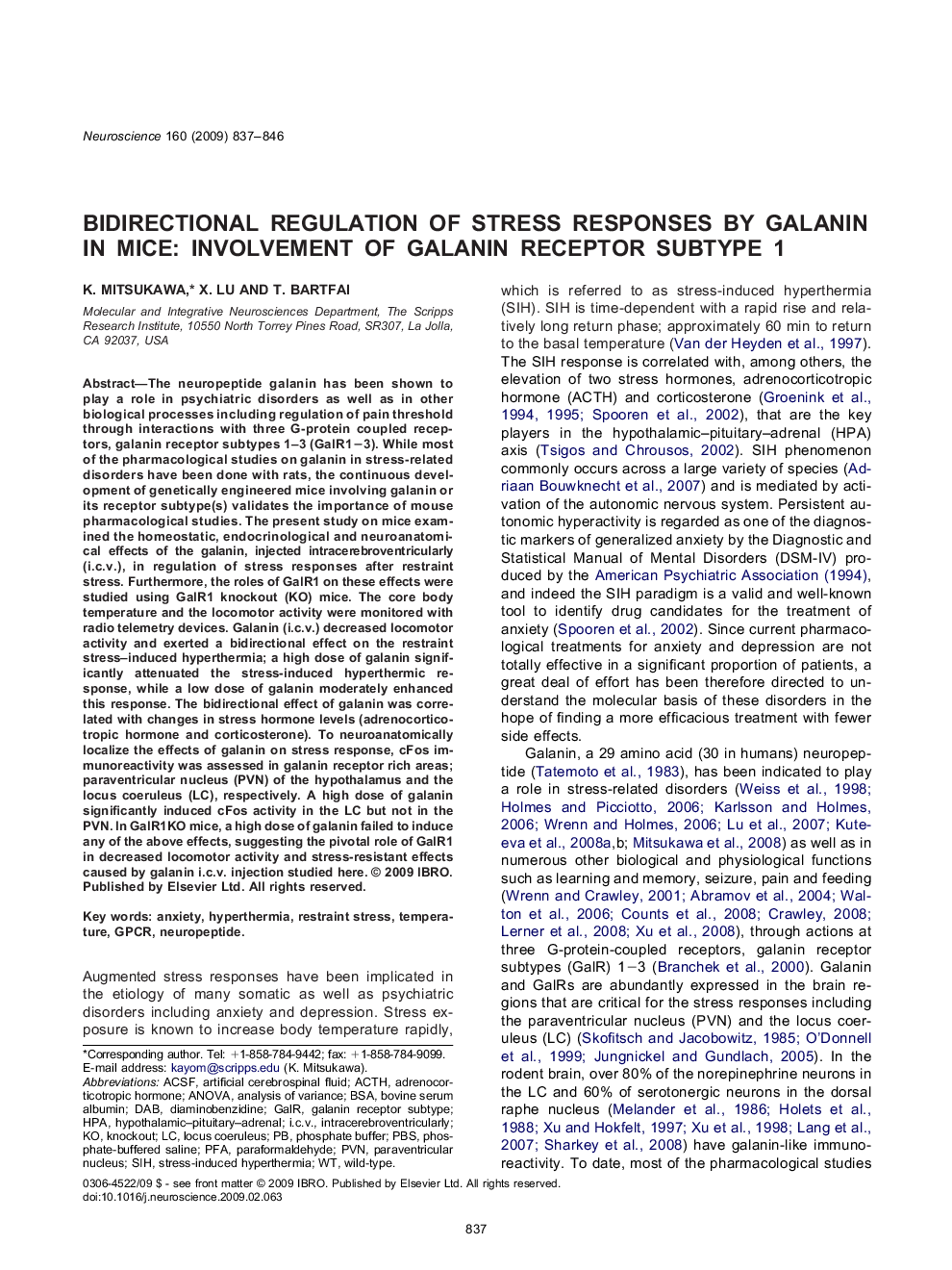| Article ID | Journal | Published Year | Pages | File Type |
|---|---|---|---|---|
| 4339777 | Neuroscience | 2009 | 10 Pages |
The neuropeptide galanin has been shown to play a role in psychiatric disorders as well as in other biological processes including regulation of pain threshold through interactions with three G-protein coupled receptors, galanin receptor subtypes 1–3 (GalR1−3). While most of the pharmacological studies on galanin in stress-related disorders have been done with rats, the continuous development of genetically engineered mice involving galanin or its receptor subtype(s) validates the importance of mouse pharmacological studies. The present study on mice examined the homeostatic, endocrinological and neuroanatomical effects of the galanin, injected intracerebroventricularly (i.c.v.), in regulation of stress responses after restraint stress. Furthermore, the roles of GalR1 on these effects were studied using GalR1 knockout (KO) mice. The core body temperature and the locomotor activity were monitored with radio telemetry devices. Galanin (i.c.v.) decreased locomotor activity and exerted a bidirectional effect on the restraint stress–induced hyperthermia; a high dose of galanin significantly attenuated the stress-induced hyperthermic response, while a low dose of galanin moderately enhanced this response. The bidirectional effect of galanin was correlated with changes in stress hormone levels (adrenocorticotropic hormone and corticosterone). To neuroanatomically localize the effects of galanin on stress response, cFos immunoreactivity was assessed in galanin receptor rich areas; paraventricular nucleus (PVN) of the hypothalamus and the locus coeruleus (LC), respectively. A high dose of galanin significantly induced cFos activity in the LC but not in the PVN. In GalR1KO mice, a high dose of galanin failed to induce any of the above effects, suggesting the pivotal role of GalR1 in decreased locomotor activity and stress-resistant effects caused by galanin i.c.v. injection studied here.
